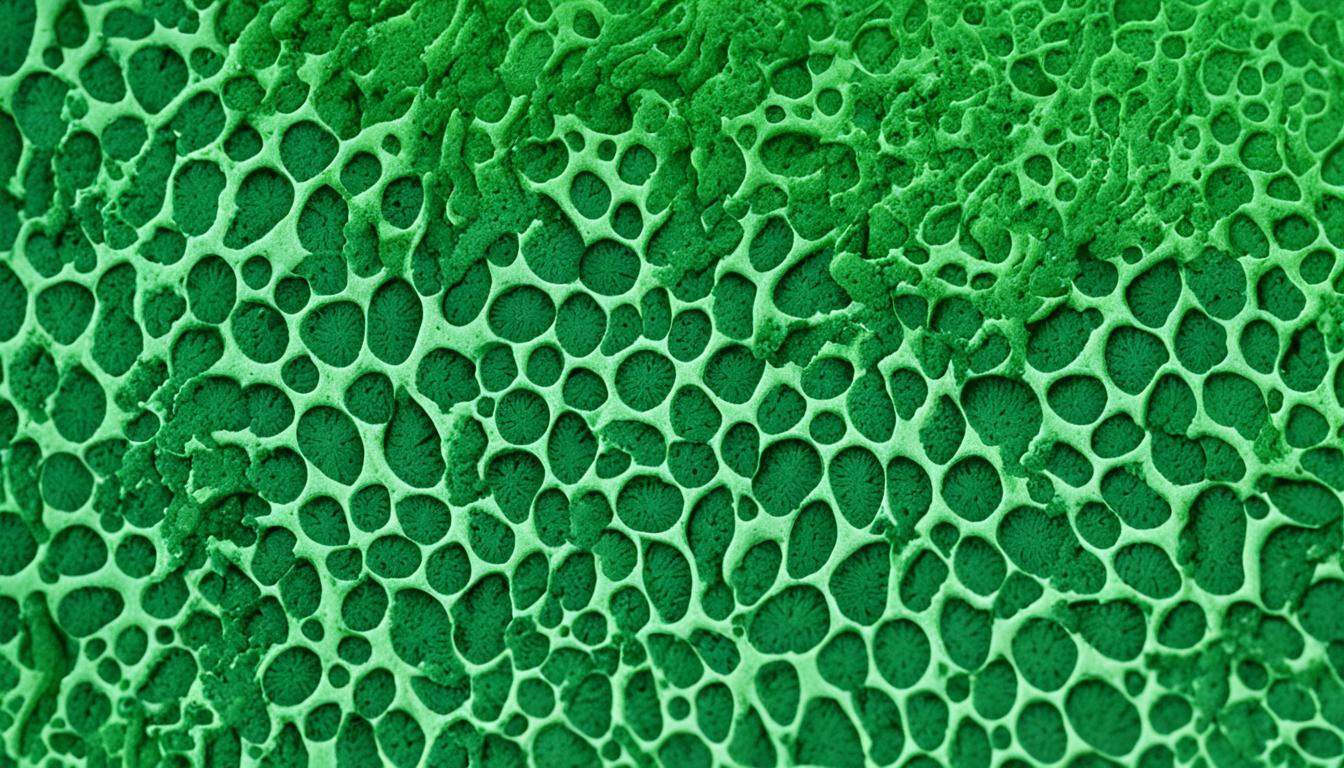
Toenail Mold Causes and Effective Treatments
Are you struggling with toenail mold? Don’t worry, you’re not alone. Toenail mold is a common fungal infection that affects many people. In this article, we will explore the causes of toenail mold and discuss the various effective treatments available, so you can put an end to this pesky problem.
Toenail mold, also known as onychomycosis, is caused by a group of fungi called dermatophytes. These fungi thrive in warm, moist environments, making your toes the perfect breeding ground. Factors such as poor hygiene, wearing tight shoes for prolonged periods, walking barefoot in public places like swimming pools and locker rooms, and having a weakened immune system can all contribute to the development of toenail mold.
Key Takeaways:
- Toenail mold, or onychomycosis, is a fungal infection that affects the toenails.
- Poor hygiene, tight shoes, walking barefoot in public places, and weakened immune system can contribute to toenail mold.
- Effective treatments for toenail mold include topical antifungal medications, oral antifungal drugs, laser therapy, and surgical interventions.
- Topical antifungal medications are applied directly to the infected nails, while oral antifungal drugs work from within.
- Laser therapy and surgical interventions may be necessary for severe cases of toenail mold.
Understanding Toenail Mold
Toenail mold, also known as onychomycosis, is a fungal infection that affects the toenails. It is caused by a group of fungi called dermatophytes, which thrive in warm, moist environments. Factors such as poor hygiene, wearing tight shoes for prolonged periods, walking barefoot in public places like swimming pools and locker rooms, and having a weakened immune system can all contribute to the development of toenail mold.
The warm and damp environment created by wearing tight shoes or walking barefoot in public areas provides the perfect breeding ground for dermatophytes. These fungi can invade the toenails through small cuts or breaks in the skin around the nails. Once inside, they multiply and feed on the keratin protein in the nails, leading to discoloration, thickening, and brittleness.

Common Symptoms of Toenail Mold
- Yellow, brown, or white discoloration of the toenails
- Thickened and brittle nails
- Nail crumbling or splitting
- Foul odor from the infected nails
- Pain or discomfort while walking or wearing shoes
If left untreated, toenail mold can spread to other nails or even to the surrounding skin, causing further complications. It is important to seek prompt treatment to prevent the infection from worsening.
It is estimated that toenail mold affects approximately 10% of the adult population worldwide. Protecting your feet from potential sources of infection and practicing good foot hygiene can help reduce the risk of developing toenail mold.
In the next section, we will explore the various effective treatments available to combat toenail mold and restore the health and appearance of the nails.
Effective Treatments for Toenail Mold
When it comes to combating toenail mold, there are several effective treatments available that can help eliminate the fungal infection and restore the health and appearance of your nails. Here are the top options:
1. Topical Antifungal Medications
Topical antifungal medications, such as creams or ointments, are applied directly to the infected nails. These medications contain powerful antifungal agents that work to kill the fungi, stopping the spread of toenail mold. It is important to apply the medication as instructed by your healthcare professional and continue the treatment until the infection is completely cleared.
2. Oral Antifungal Drugs
Oral antifungal drugs are prescribed by healthcare professionals to treat toenail mold from within. These medications work systemically, meaning they enter the bloodstream and travel to the affected nails, where they help eliminate the fungal infection. It is crucial to follow the prescribed dosage and complete the full course of treatment to ensure effective results.
3. Laser Therapy
Laser therapy is a non-invasive treatment that has shown promising results in combating toenail mold. This treatment involves using focused light energy to target and eradicate the fungus from the nails. Laser therapy is considered safe and painless, making it an attractive option for individuals seeking an alternative to medications. Multiple sessions may be required to achieve optimal outcomes.
4. Surgical Interventions
In severe cases of toenail mold, surgical interventions may be necessary to remove the infected nail. This procedure is typically performed by a podiatrist or dermatologist under local anesthesia. After the infected nail is removed, a new nail will grow in its place. Surgical interventions are usually reserved for cases where other treatments have failed or when the infection has caused significant damage to the nail bed.
It is important to remember that different individuals may respond differently to these treatments. Consulting with a healthcare professional is crucial to determine the best treatment plan for your specific condition.

With these effective treatments at your disposal, you can take control of your toenail mold and achieve healthy, beautiful nails once again.
Conclusion
Toenail mold is a common fungal infection that can be unsightly and uncomfortable. It is vital to identify the cause of the infection and seek suitable treatment to effectively combat this condition.
Fortunately, there are several treatment options available for toenail mold. Topical antifungal medications, such as creams and ointments, can be applied directly to the infected nails to eliminate the fungus. Oral antifungal drugs, prescribed by healthcare professionals, work from within to eradicate the infection. Laser therapy is a non-invasive treatment that utilizes focused light energy to target and destroy the fungus. In severe cases, surgical interventions may be necessary to remove the affected nail.
By choosing the appropriate treatment, individuals can find relief and restore the health and appearance of their toenails. If you suspect you have toenail mold, it is important to consult with a healthcare professional for a proper diagnosis and a personalized treatment plan tailored to your specific needs.




